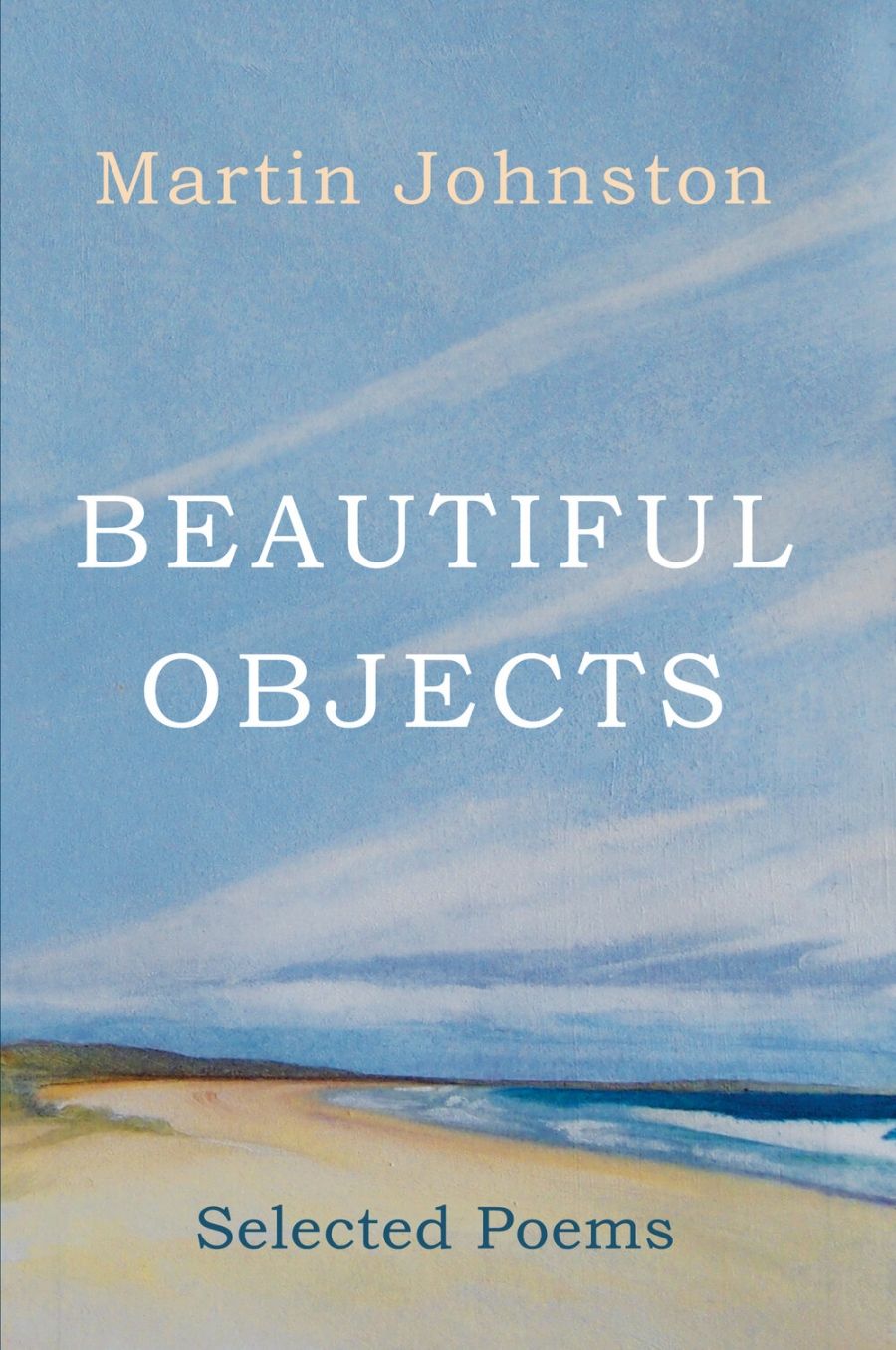
- Free Article: No
- Contents Category: Poetry
- Review Article: Yes
- Article Title: ‘Love is the subject’
- Article Subtitle: A welcome new edition of Martin Johnston
- Online Only: No
- Custom Highlight Text:
There has as yet been no comprehensive critical study of the poets associated with the ‘Generation of ’68’, of whom Martin Johnston was perhaps the most naturally gifted and certainly the most intellectually expansive representative. This is because the project of these poets, to fully incorporate the stylistic innovations of modernist poetics and its development in postwar American models within local practice, is still ongoing. If we examine only those poets gathered in the 1979 New Australian Poetry anthology – in which Johnston’s lengthy experiment in parataxis, ‘The Blood Aquarium’, appears as a signature work – we find major authors even today in the process of developing their practice.
- Grid Image (300px * 250px):

- Book 1 Title: Beautiful Objects
- Book 1 Subtitle: Selected poems
- Book 1 Biblio: Ligature, $29.99 pb, 182 pp
Poets such as Jennifer Maiden and Alan Wearne continue to produce key books as they move into their seventies; central figures such as Robert Adamson and John Tranter polished their approach to a mature style through the 1980s, and it is this later work that is appropriately foregrounded in their carefully customised selected volumes. This creates a distinction between poets currently practising and those whose careers were truncated at an earlier period: not only the famous examples of Michael Dransfield and Charles Buckmaster but also Vicki Viidikas, who died at the age of fifty; and most especially Martin Johnston, who was just forty-two when his life was cut short by an inherited alcoholism and ill health.
The work of these poets retains the edge of Australian poetry’s initial confrontation with modernist techniques during this ground-breaking period. It is important to recognise that – with a few notable exceptions – Johnston’s oeuvre was largely completed during the 1970s, although delays in publication meant that his major mature collection, The Typewriter Considered as a Bee-Trap, did not appear until 1984. Yet even in this context, Johnston’s writings are distinctively singular: he derives little influence from those he dismisses as the ‘groovier modern Americans’, the Black Mountain and New York School poets whose example mainly underwrites the approach of his contemporaries. It seems entirely fitting that Nadia Wheatley commences this new selection with a set of his translations from twentieth-century Greek poets: Johnston’s consummate deployment of the extended line, a key feature of his style, resonates with Greek masters such as Giorgios Seferis and Yiannis Ritsos. This can also be located in his childhood study of Homer in the original, fostering an attention to scansion that is seldom evident in the work of his countercultural peers. And it is this technical achievement that guarantees Johnston’s poetry as something more than merely a symptomatic product of its time.
In spite of this, Johnston has been poorly represented in anthologies since his death, with few advocates until recently beyond his personal associates. His work has remained out of print for nearly thirty years. This seems remarkable given the evident quality and sheer originality of the poems collected here. ‘The Sea Cucumber’, written while he was still in his mid-twenties, memorialises his father, the celebrity author George Johnston, and stands alongside works by Kenneth Slessor and John Manifold as one of the great Australian elegies. The task of elegy, and the troubling fate of poets, is a recurring theme in Johnston’s work, addressed explicitly in ‘In Memoriam’: ‘Whether there is a particular grief in the lives of poets / is a question that much engages us, / that we answer in the affirmative, / a priori, because it’s useful for us to do so.’ This is also the subject of the metapoetic ‘Gradus Ad Parnassum’, which speculates on the appropriate formal approach to a version of Vladimir Mayakovsky’s final verses (and suicide letter), ‘The Shipwreck of the Heart’. The modernist hypothesis Johnston surmises is that form and content can never be disentangled: ‘the explanation of each poem / precisely the poem itself’.
This recognition led Johnston to write works of exceptional scope and formal ambition. ‘The Blood Aquarium’, utilising Poundian techniques of collage directed by relational images, is his earliest successful attempt at a poem of length. He spent much of the late 1970s engaged on an even more elaborate work, ‘To the Innate Island’, a poem of such dizzying allusiveness that it is supplemented by lengthier notes than The Waste Land, and requires similarly assiduous critical explication. But this homage to Greece, both historical and empiric, also contains some of his most beautiful lines and startling imagery: ‘the twisting blue scarf of the beach’, ‘a cat shadow-boxes a pot of geraniums’. Alongside these major works Johnston completed many fine shorter poems, and was particularly drawn to the formal exigencies of the sonnet. Wheatley concludes her selection with the tightly woven ‘Grief’, with its breathtaking closing couplet: ‘Love is the subject and love’s loss the text. / Grief breaks the heart and yet the grief comes next.’
As an adolescent, I observed Martin Johnston as he sat quietly within the circle of drinkers who gathered at the Forest Lodge Hotel in Glebe on Friday evenings. I once stayed up all night with him, as he demolished a bottle of whiskey while maintaining a steady flow of erudite conversation. He spoke mainly about his famous parents, Charmian Clift and George Johnston, and the biography he was planning to write about them, which was never completed. There was never any doubt that one was in the presence of a genuine poet, as this essential collection confirms.


Comments powered by CComment